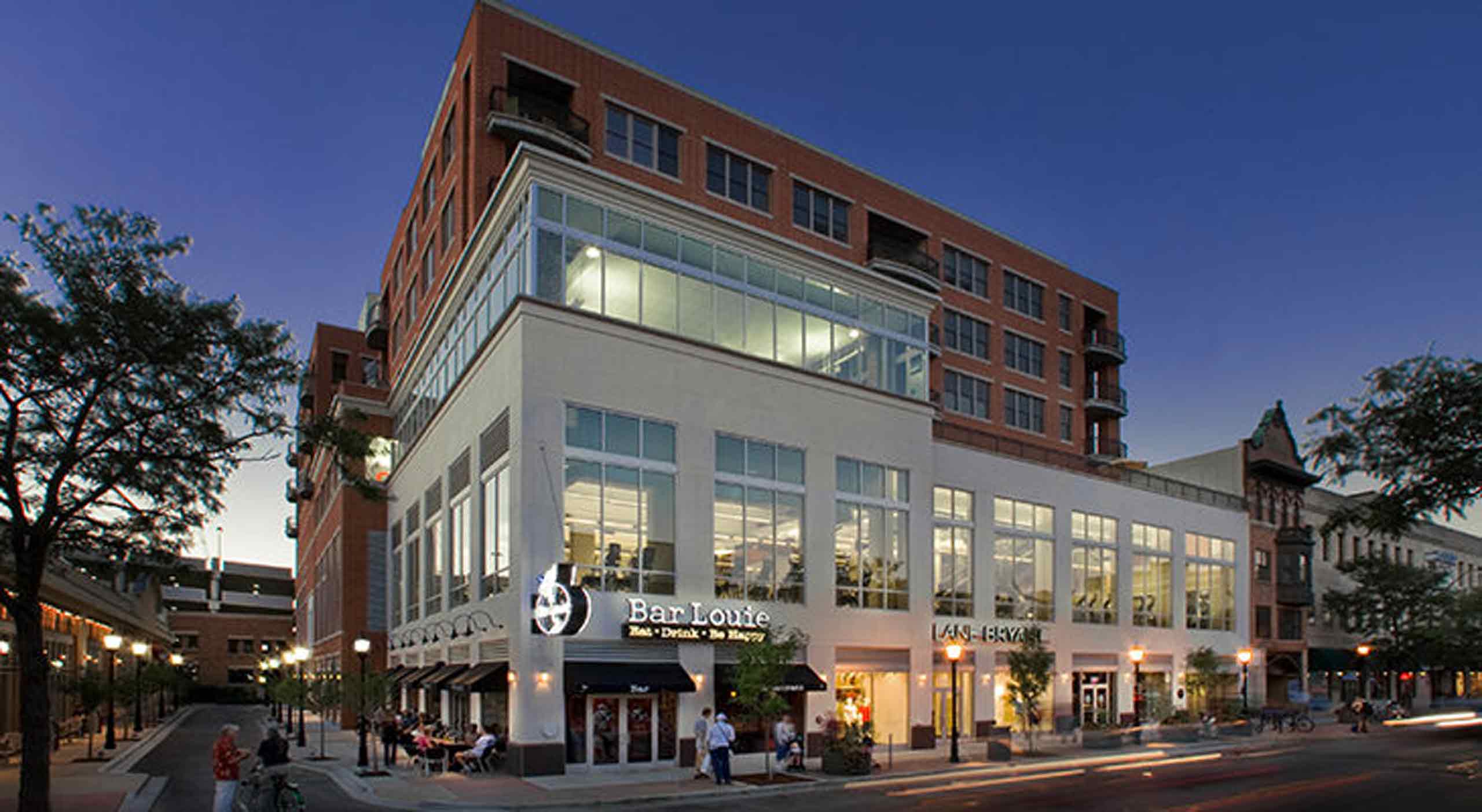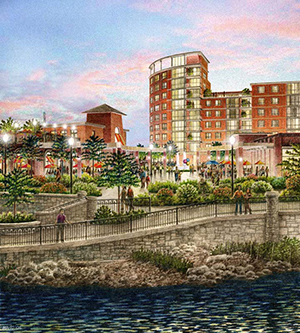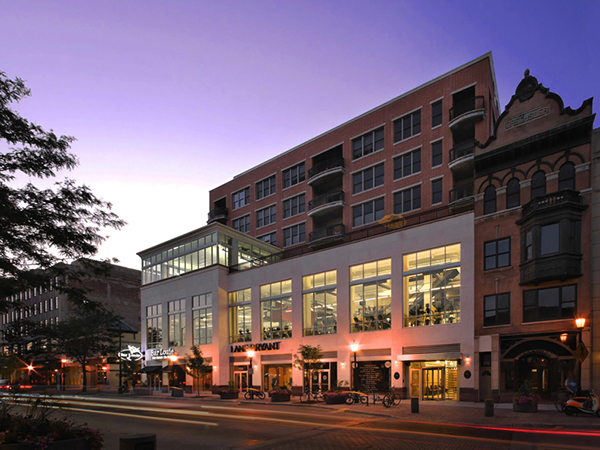
“How can we convince our target audience to stay with us longer?” “How do we develop a place with an identity?” We often get asked these questions by our clients.
The new town center experience starts with a great first impression. Imagine pulling your car into a new development with established landscaping at the entry. Upon parking your car, you are presented with a user-friendly info-kiosk that delivers coupons from local businesses to your phone. You are immersed within programmed events that foster a real social energy throughout the complex. A cozy main street with parking on either side slows the flow of vehicular traffic, enabling safe pedestrian flow. Ample bike racks along the main street encourage those nearby to come participate in the vitality. Wide sidewalks in front of the commercial storefronts open the flow from indoors to outside and engage consumers as they pass. Nestled above and beyond are balconies and terraces where residents can overlook the bustle of the street below. The development becomes a walkable and bikeable celebration of vibrant retail shops and an array of dining options.
“Live, work, play” has become the goal of the new mixed-use development. No longer are we in the amenity wars where buildings must have all things and keep people inside. Now we look to create neighborhoods where the needs can be dispersed, providing opportunities for engagement, entrepreneurship, and energy.

Live, work, play town centers should seek to generate revenue through sales, thus ensuring a strong regional sales tax base. This is achieved when these developments look to be inclusive. Thoughtful planning is paramount. No longer are these gated communities. The new town center should be a threshold, connecting the existing areas and businesses to new opportunities. It is this grounding in the surroundings that contributes to the success of any new town center development.
Town centers must look to generate a regional buzz for sustainable development, both environmentally and economically. Newer, denser developments can result in taxing the infrastructure if you are not careful. As with any new town center, much care should be given to doing “no harm.” Systems and services must be addressed to ensure that any new development does not impact the local area beyond its limits. Also, systems and services must remain financially feasible for the tenants so that they do not economically impact their ways of life. Translating service costs to rents and then to goods and services is a reality. So, with any new town center, it is imperative that infrastructure services be “economized” to handle the increased demand, while not creating an undue burden on the residents and businesses.

For any town center to be successful, the design team must work in unison with the creative marketing team on everything from the street naming to the overall character of the development to display both excitement and status. Market studies are imperative; however, there also needs to be an eye toward how the future will change the components of the development. Variety is key to development success, but that variety must be right-sized and the spaces must be flexible for future change.
Essential to initial success is the creation of a multigenerational customer experience by providing opportunities for everyone to find something to do or a place that fits them. This requires designing for instant gratification. You want the town center to be a destination, integrated into the greater region at large but giving it a focus; it needs to be a place that people want to be a part of and call their own. The town center must allow people to find their own equilibrium. It must have the right amount of intensity and activities at the right times, all the while appealing to the senses. An active town center where everyone can share a space “individually . . . together” proves that thoughtful urban design brings people together by choice. People must be able to move at their own pace, safely and easily. There must be ample activities and places that appeal to people of all ages. Ultimately, the experiences created should not be defined by ages but more by interests.

Often, we are asked to design a building that as part of an existing town center community. It becomes important to ensure the new building fits into and betters that urban fabric. The Eleven 20 Club in Oak Park, Illinois creates a transit-oriented development geared toward those who want a smaller footprint living in an existing and historic urban environment. The success of this project is that it provides modern retail facilities that add to the walkability of the area, while restoring and preserving the historic Drechsler Building. This juxtaposition of new and old provides the ability for larger brands to fit in with local businesses. Beyond the streetscape, 44 condominiums nestled above the retail components provide a perch to overlook the activity below. Residents have views of the historic downtown and the necessary separation and amenities for quality living.
Contact us to learn more about town centers or comment below to share your thoughts on this post.


